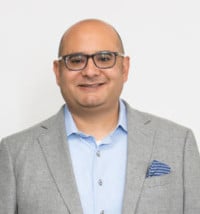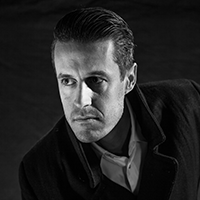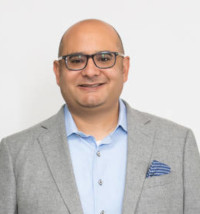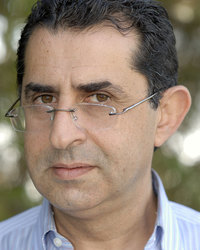Basic Information About Patents
 The decision to pursue patents, which kind and how much to spend is a business decision that merits both consideration and planning.
The decision to pursue patents, which kind and how much to spend is a business decision that merits both consideration and planning.
Utility Patents
The cost for a typical US patent, from start to finish, is between $10,000 and $40,000, and generally takes 2-7 years. Currently, the published average time from filing to grant is about 3 1/2 years.
The patent process is like a tennis match. To get a normal, US “utility” application prepared and filed with the United States Patent and Trademark Office (i.e., “serving the tennis ball”), you should expect to spend between $5,000-20,000, depending on the kind and complexity of the invention. About 1-4 years after you serve, the patent office will return the serve. There will be additional costs if you want to hit the ball back and continue the patent process. There may be several other volleys after this, each with their own additional costs. When the patent office agrees to grant the patent, there are further costs for the final processing. All told, after filing the application, the follow-on costs are typically in the $1,500-15,000 range (depending on a number of factors).
Provisional Patents
There is also the option of an informal provisional application, which typically runs around $2,000 depending on the state of the documents and drawings you provide. The provisional application expires in 12 months and there’s no tennis match with the patent office. Provisionals don’t give any protection unless they are followed by a formal utility patent application, but they provide “patent pending” status, establish a date of invention, and set deadlines for filing a formal application. Many people like to file provisional applications during initial market tests, or while arranging distribution and sales channels. Then if it looks like the product will sell, they can decide whether to pursue a real or utility patent.
Design Patents
Another option you might want to consider pursuing is a design patent. These patents typically cost about $3,000 to start and issue in 12-18 months. Design patents are for the ornamental/ artistic/ non-functional aspects of products. People use design patents as an inexpensive way to protect a product’s appearance.
Can You get a Patent?
Patentability requires that your invention be new and something more than an obvious variation or modification of the prior art. “Prior art” is all information that has been made available to the public in any form before a given date that might be relevant to a patent’s claims of originality. The US courts and the patent office have gotten tougher on the obviousness standard.
Where Should You Start?
A prior art search should be one of your first steps in the patent process. In the US, the prior art mostly includes:- Any patent filed prior to your invention;
- Any publication, e.g., magazine article, journal article, newspaper story, web page published more than one year prior to when you file your patent application; and
- Any public use, sale, or offer of sale of the invention by you or anyone else in the US more than one year before you filed your patent application.
There are some other categories -- the patent laws are filled with gotchas. Just from these three categories, you can see that even if someone else hasn’t patented your invention (or they did and it expired), you still might not be able to get a patent.
Before you spend the money to hire someone to do a patent search, try doing some searching on your own. Use a search engine such as Google or Yahoo to see if there is (or was) anything out there like your invention, or articles which are on point. You should also use the patent database of the US Patent & Trademark Office, www.uspto.gov, to search issued patents and published applications. You can also search for issued patents at www.google.com/patents. Most people search and find nothing, but at least it’s a good start.
While there are professional prior art searchers, many people have their patent attorney do the search. Using your attorney is usually more efficient and can be more accurate.
When Should You Start?
The patent law also has gotchas on deadlines. The US and foreign laws favor early filings. Tread carefully here. If you file the application too late, you might lose US and/or foreign rights. Provisional filings raise special concerns. Most foreign countries have “absolute novelty” rules, which bar patenting if there has been any kind of disclosure of the invention anywhere prior to your filing. The US has a one-year grace period on the absolute novelty rule. That is, in the US you can file your patent application any time within one year of public sale, use or disclosure. The rules are quite complex, so don’t rely on this simplification. The safest approach is usually to file your formal patents prior to any kind of public disclosure or attempt at commercialization.
Closing Comments
These estimates are budgeting guidelines based upon having a competent patent attorney do the work, and include the government fees and other costs. You can look up the government fees at www.uspto.gov.
In addition to patents, you might also want to consider trade secrets, copyrights and trademarks.
Steven C. Sereboff, Mark A. Goldstein, and Michael D. Harris are are partners in SoCal IP Law Group LLP (www.socalip.com">http://www.socalip.com">www.socalip.com). About SoCal IP Law Group LLP: SoCal IP Law Group LLP handles intellectual property matters for high technology and high growth companies. This work involves patents, trademarks, copyrights, trade secrets, licenses and IP-related business transactions. Although most of our work is with companies in the $10M-$200M range, our clients also include multi-billion dollar multinationals and start-ups. We have chosen to limit our practice to intellectual property law, and therefore have developed considerable expertise and a reputation for excellence in our field.
Article (c) 2007 SoCal IP Law Group LLP. Used with permission.
 Tony Greenberg
Tony Greenberg
 Ivan Nikkhoo, Managing Partner – Navigate Ventures
Ivan Nikkhoo, Managing Partner – Navigate Ventures Michael Sherman, Neil Elan and Karine Akopchikyan
Michael Sherman, Neil Elan and Karine Akopchikyan Alejandro Guerrero
Alejandro Guerrero Eric Eide, Alliance for SoCal Innovation
Eric Eide, Alliance for SoCal Innovation Kevin DeBre
Kevin DeBre Braven Greenelsh
Braven Greenelsh Rob Freelen, Los Angeles Market Manager, Silicon Valley Bank
Rob Freelen, Los Angeles Market Manager, Silicon Valley Bank Braven Greenelsh
Braven Greenelsh Kaäre Wagner, Silicon Valley Bank
Kaäre Wagner, Silicon Valley Bank Al Guerrero, Silicon Valley Bank
Al Guerrero, Silicon Valley Bank Rob Freelen, Los Angeles Market Manager, Silicon Valley Bank
Rob Freelen, Los Angeles Market Manager, Silicon Valley Bank Sid Mohasseb
Sid Mohasseb William Hsu
William Hsu Dinesh Ravishanker
Dinesh Ravishanker Dina Lozosfky
Dina Lozosfky Melinda Moore
Melinda Moore Jaspar Weir
Jaspar Weir Erik Caso
Erik Caso Tracy Olmstead Williams
Tracy Olmstead Williams Dave Berkus
Dave Berkus Bernard Luthi
Bernard Luthi Peter Cowen
Peter Cowen Nick Hedges
Nick Hedges Eric Larsen
Eric Larsen Michael Terpin
Michael Terpin Steve Reich
Steve Reich